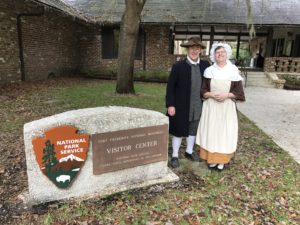 Tom and I have been doing living history every Saturday at Fort Frederica. Although Fort Frederica has done living history in the past, the program had died out with staff changes. We have been helping to develop the program and offering suggestions that will increase repeat visitation and get families more involved. At Fort Frederica we focus on the year 1742, the farthest back in history we have gone so far.
Tom and I have been doing living history every Saturday at Fort Frederica. Although Fort Frederica has done living history in the past, the program had died out with staff changes. We have been helping to develop the program and offering suggestions that will increase repeat visitation and get families more involved. At Fort Frederica we focus on the year 1742, the farthest back in history we have gone so far.
1742 was the year that the British beat the Spanish forces in Georgia. It was also the height of the town of Frederica. About 1,000 people lived in Frederica in 1742: 600 soldiers and 400 townspeople.
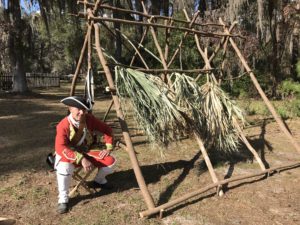 In our living history displays, Tom and I focus on the start of the settlement. Tom is building a palmetto hut, a temporary shelter. The colonists would have lived in these huts until they could build wood or tabby houses. Some of the soldiers and colonists never lived in anything but a palmetto hut.
In our living history displays, Tom and I focus on the start of the settlement. Tom is building a palmetto hut, a temporary shelter. The colonists would have lived in these huts until they could build wood or tabby houses. Some of the soldiers and colonists never lived in anything but a palmetto hut.
Every Saturday we set up the living history display. I cook over the campfire and have made a variety of stews and soups. The bake kettle is a big hit. I made corn bread, Apple Brown Betty, and apple pie. People love to see what is cooking!
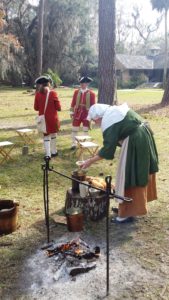 I also set up a candlemaking display to explain a basic of colonial life that most of us don’t think about. Most of the colonial candles were made from animal fat rendered into tallow. In order to get the best tallow, you have to render the fat more than once. The tallow was dipped or poured into molds to make the candles. It was extremely time intensive and the average colonist needed 400 candles to make it through the year. I heat up some beeswax (easier to get than tallow) and let children try dipping their own candles.
I also set up a candlemaking display to explain a basic of colonial life that most of us don’t think about. Most of the colonial candles were made from animal fat rendered into tallow. In order to get the best tallow, you have to render the fat more than once. The tallow was dipped or poured into molds to make the candles. It was extremely time intensive and the average colonist needed 400 candles to make it through the year. I heat up some beeswax (easier to get than tallow) and let children try dipping their own candles.
When I am not cooking or demonstrating candlemaking, I mend, spin, or knit. Tom has a colonial jacket that had holes burned in it. I mended it with the only wool fabric I had available, even though the coat is dark blue and my wool was light gray. Colonists wouldn’t have been picky about the colors of their patches!
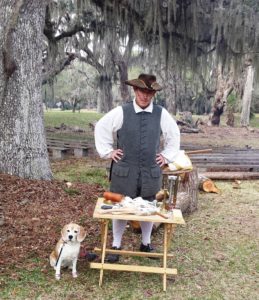 Tom works on his palmetto hut but also talks to people about colonial money. Because the money was all silver, it didn’t matter if you used Spanish reals, English crowns, French livres, or German thalers. Spanish reals were most common in this part of the world.
Tom works on his palmetto hut but also talks to people about colonial money. Because the money was all silver, it didn’t matter if you used Spanish reals, English crowns, French livres, or German thalers. Spanish reals were most common in this part of the world.
Tom also talks to people about simple things like tools and utensils. He often demonstrates how to make a fire with flint and steel or the Hudson Bay burning lens.
People are fascinated by the ingenious ways the colonists figured out how to use what they had. We like to think they go away having learned something after talking to us. We also love how kids are drawn to the live demonstrations. This last Saturday we had families that talked to us for almost an hour!
We believe living history helps a park come alive in the imaginations of the visitors. 1742 can seem like a very long time ago, but when our visitors watch us living it, it connects them in a very real way to the park and to the history.


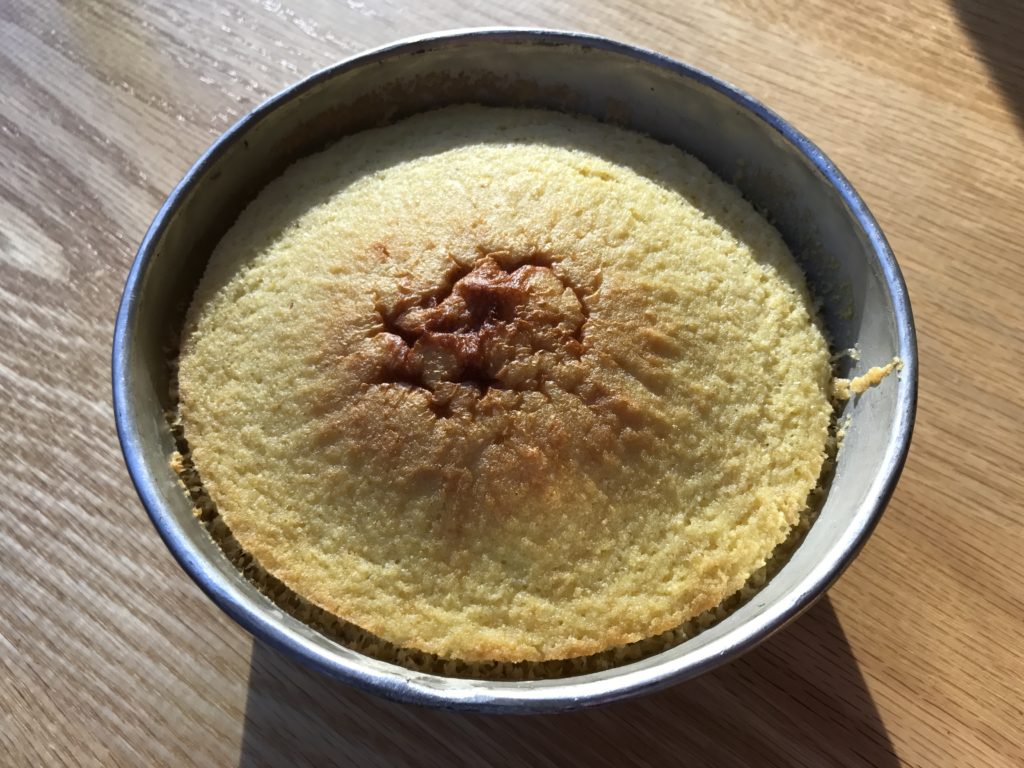
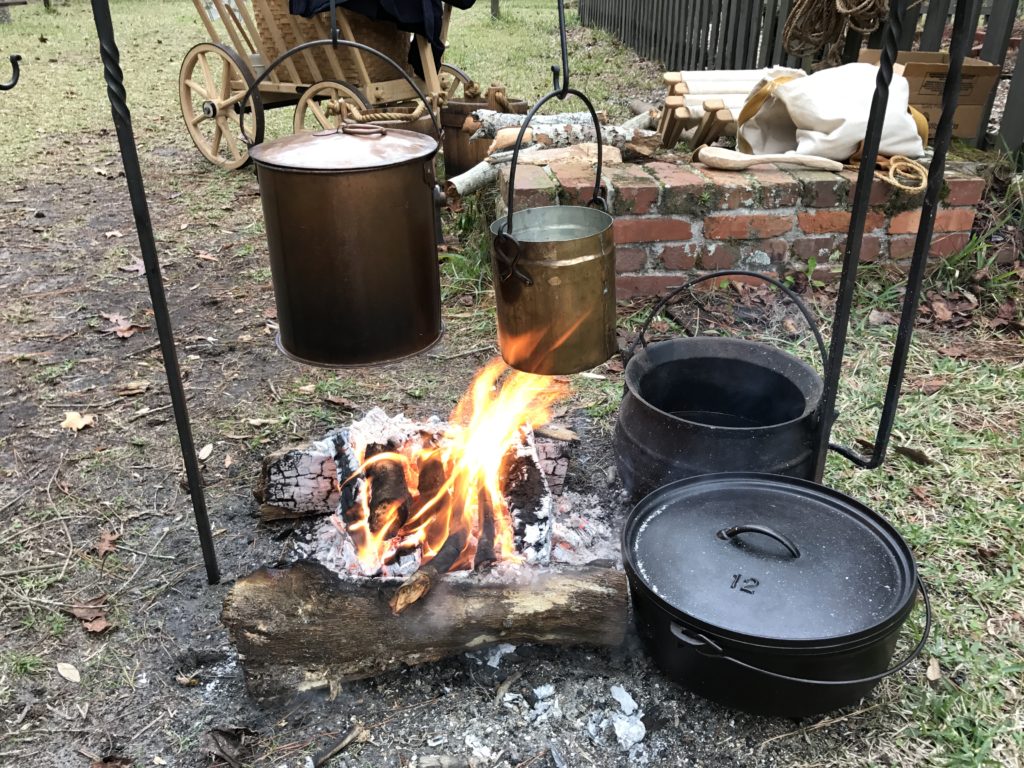
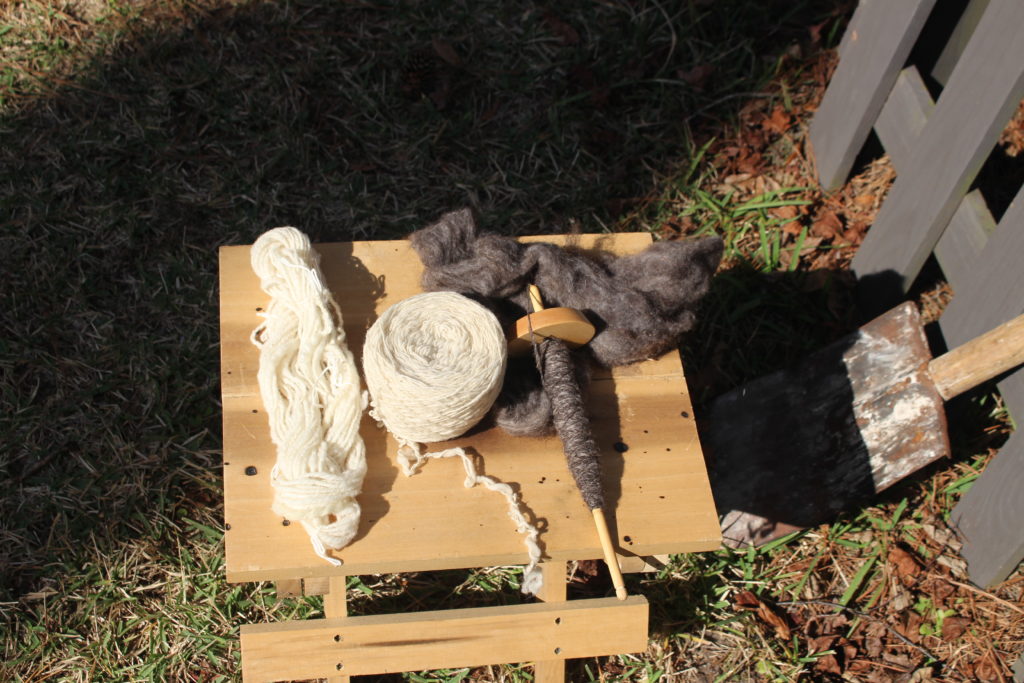
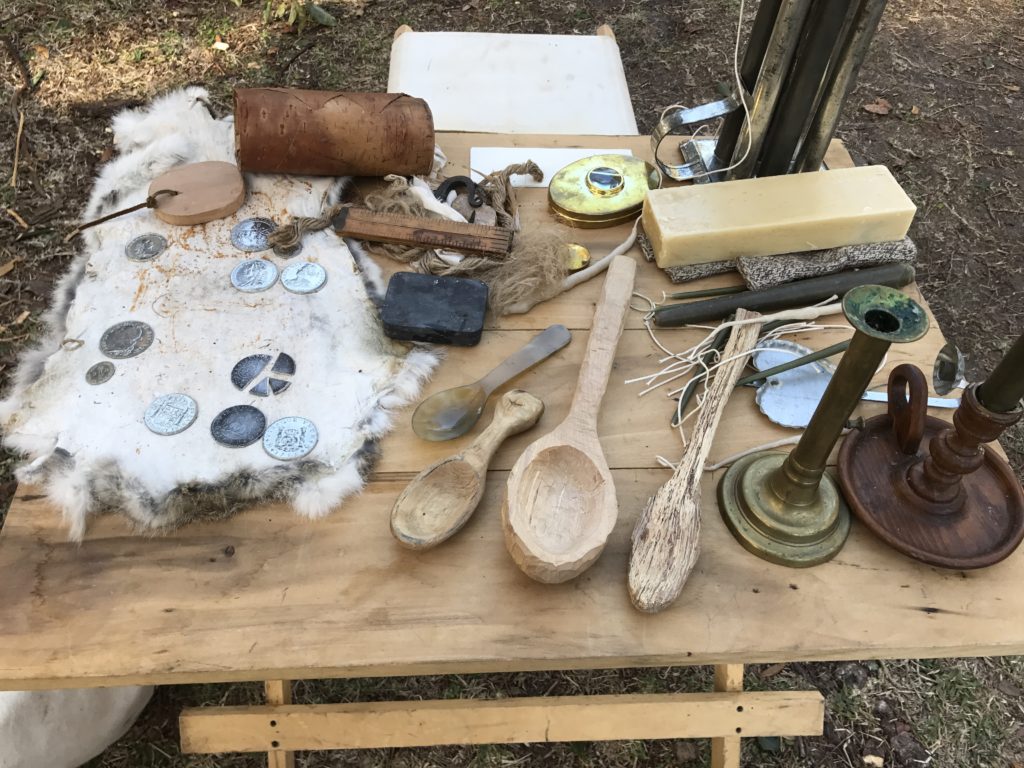
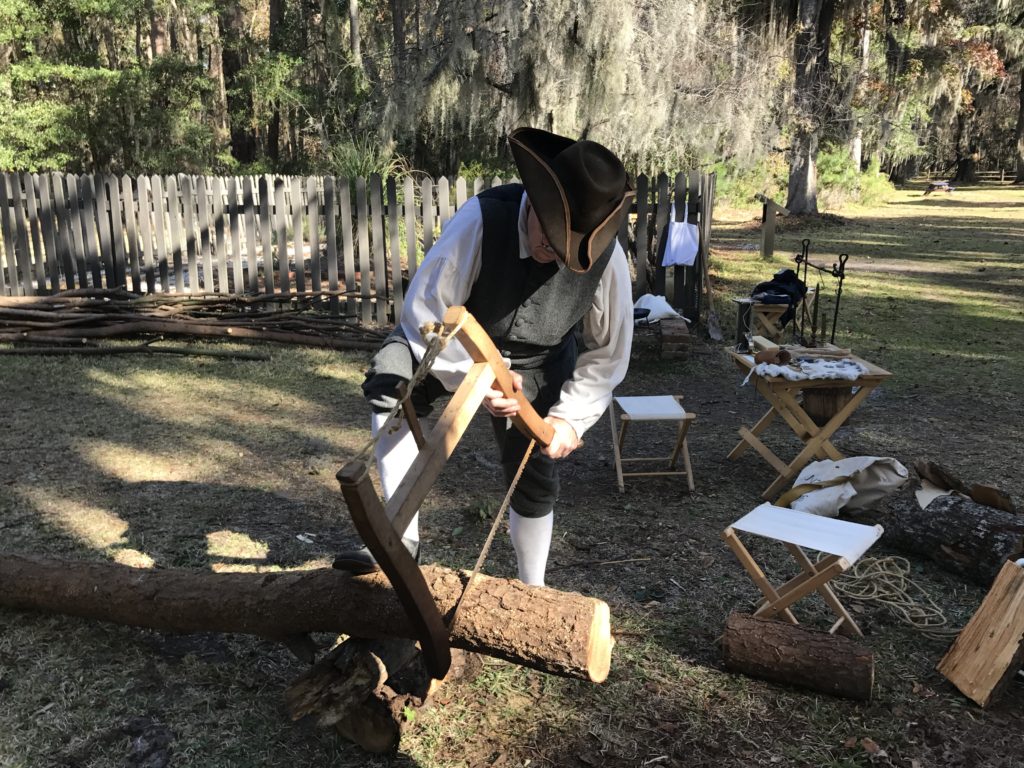
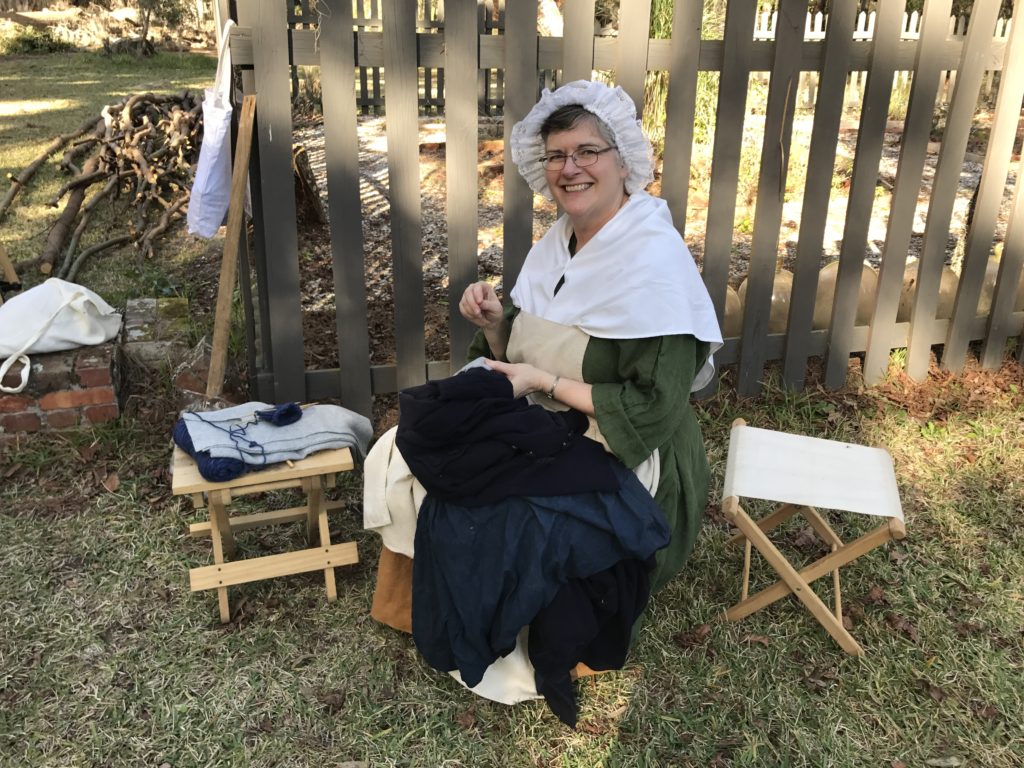
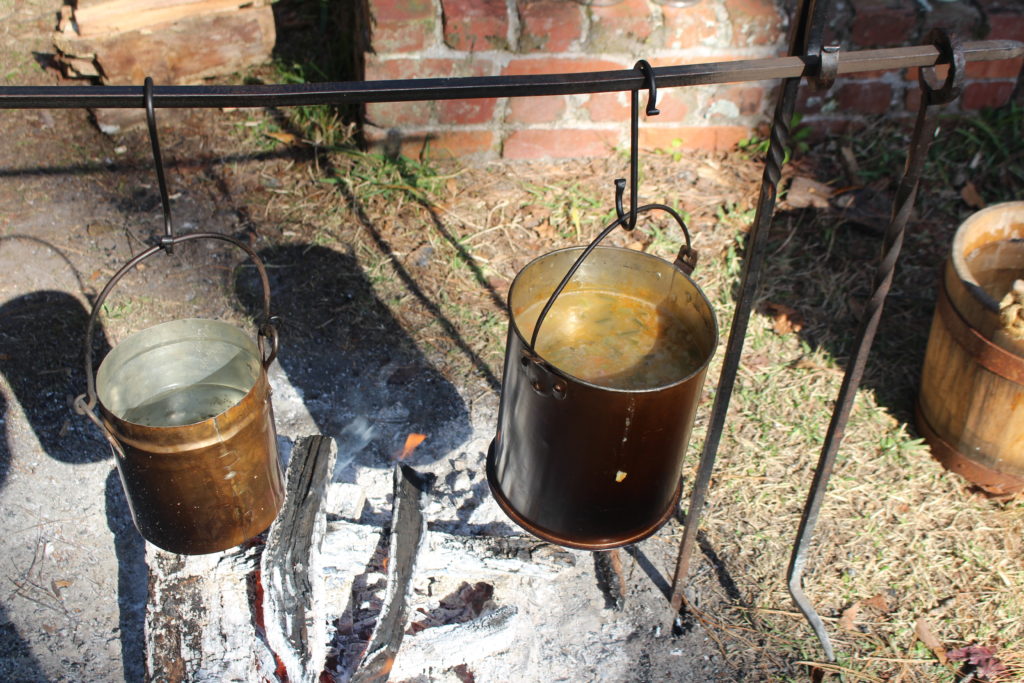
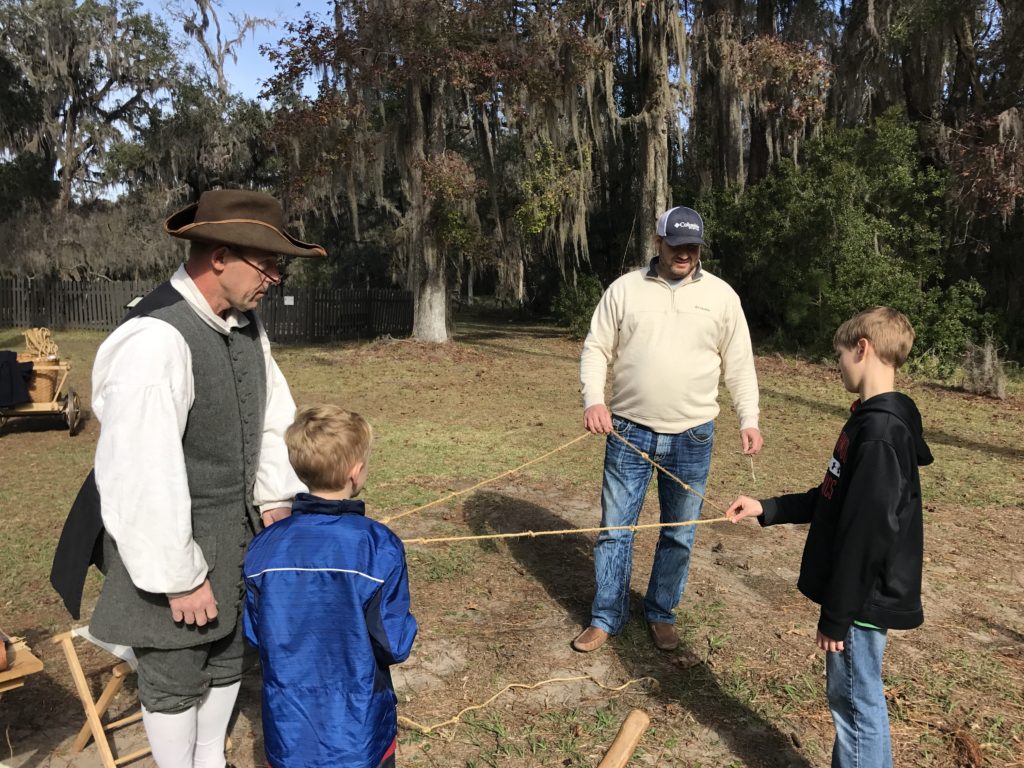
These are wonderful pics of you & Tom doing your demonstrations — lucky visitors to see you reliving history for their enjoyment!
Thank you, but we think we are the lucky ones because we get to have so much fun!
You ARE the lucky one! I love how you two have enjoyed your retirement!!
Thanks for reading Cathy. I hope you are enjoying your retirement as well!
So far it feels like an extended vacation week but yes, I am enjoying! I’ve taken over heading up the funeral dinners as of now and it gives me a huge satisfaction of my giving back.
I’m so glad. You will do an awesome job with the funeral dinners. That is a very important ministry to grieving families – as you well know.
Thanks Karen! Miss you and Tom but glad you are loving your volunteer work as well! Talk soon…off to get Daniel from school.